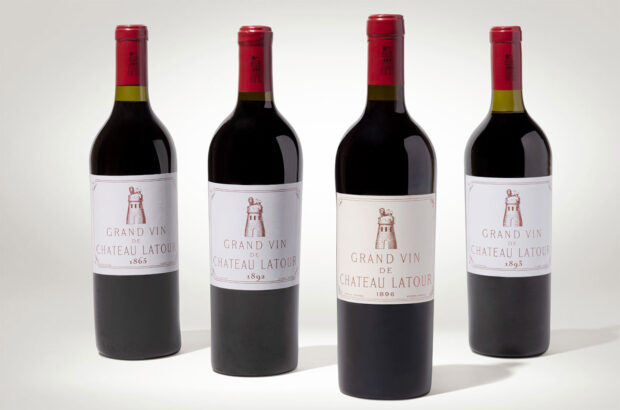If, like Prince Charles and I, you regard any established tree specimen with reverence and wonder, you will know that these are troubling times.
The leaf miner renders horse chestnuts shabby by midsummer, while bleeding canker can kill them; larches are falling to Phytophthora ramorum; Britain’s ash trees are now prone to the same Chalara fraxinea fungi that has savaged Danish and German ashes; while oaks are under threat from the mysterious Sudden Oak Death syndrome. Down here in southern Europe, Sweet Chestnut Blight is widespread; Corsican pines have a needle blight; and, most visibly of all, the red palm weevil is turning Mediterranean beachfronts all the way from Nice to Marbella into arboricultural war zones.
No wine grower should view these developments with equanimity. Few need reminding, after the difficulties of the 2012 season, that every vineyard is a reservoir of disease; and the phylloxera tale remains as cautionary as it has ever been. In addition to the regular seasonal challenges of downy and powdery mildew, more chronic disease problems seem to be spreading, especially the growing family of trunk diseases.
I wrote about trunk disease in UK vineyards at this time last year, but the problem is as widespread in more significant wine-growing locations, as Jancis Robinson recently reported for The Financial Times. The fact that this is an umbrella term for so many different conditions may be one reason why it hasn’t yet attracted the attention that some, like the consulting viticulturalist Richard Smart, feels it merits (he claims it is “verging on a modern-day phylloxera”).
Esca (‘black measles’), eutypa (‘dead arm’), Petri disease (‘black goo’), botryosphaeria (‘bot canker’), cylindrocarpon (‘black foot disease’) and phomopsis are the principal diseases concerned, and the level of contamination of nursery stocks revealed by some of the studies on the website of the ICGTD (International Council on Grapevine Trunk Diseases) is alarming. Between 40 to 60 per cent of vines planted in Spain over the last two decades, for example, show some level of decline due to fungal trunk pathogens; bot canker has been found in 18 Chinese provinces; and when nursery stocks were examined in Burgundy, Provence and SW France between 2000 and 2010, no sample proved free of this disease (though infection rates varied widely). When I chatted last year to Pascal Bloy, director of the Pole Matériel Végétale at the Institut Français du Vigne et du Vin (IFV), he confirmed that some varieties were more sensitive than others to the problems of trunk disease. They include Chenin Blanc, Sauvignon Blanc and Cabernet Sauvignon; many growers in the Languedoc, indeed, are giving up with Cabernet as they don’t want the expense of having to replace 10 per cent of the vines every year. We will hear more, much more, about trunk disease in coming years as newly planted vineyards fail. Relations between wine growers and nurserymen, too, look likely to become increasingly strained.
Not all of the news from the vineyard, though, is bad. Grapevine fanleaf virus (known as court-noué in French) looks as if it may be treated effectively by use of a new rootstock called Némadex, according to Loïc Le Cunff, a genetic researcher at the IFV. Even more promisingly, seven new varieties with natural resistance to downy mildew and powdery mildew, developed by INRA at Colmar and currently being tested in Champagne, Bordeaux, the Rhône and Beaujolais, should be available from 2016, and variants of the classic varieties endowed with this resistance should be available from 2020. This is not the fruit of genetic engineering, but of genetic selection via conventional crossing techniques. When I visited the IFV’s research domain recently, it was fascinating to see two examples of a single table vine variety alongside each other, one heavily infected with powdery mildew and the other, crossed for resistance, entirely unaffected, shown in the photograph above. (For more on this visit, see my column in the February edition of Decanter magazine.)
Every year, of course, new clones of existing varieties are released, and in contrast to the past (where production levels were often a desideratum), clonal refinements usually have a quality aim today. Among the 12 new clones released in France in 2012, for example, were two Cabernet Franc clones (N 1166 and N 1167) both designed to produce smaller quantities of grapes with higher levels of anthocyanins and polyphenols, and a new Tannat clone (N 1175) with smaller bunches and lower yields. During my IFV visit, I had a chance to taste wine made, in Burgundy and Gaillac, from a selection of new clones of Chardonnay, Merlot and Cabernet in the 2011 vintage. My hopes were muted (that word ‘clone’ is just so off-putting), yet Chardonnay clone 548 was poised and vinous, Merlot clone 181 had great mouthfeel and fruit presence, while Cabernet clone 169 was fresh, vivid and polished. t’s worth remembering that much of the credit for the high standard of ambitious Chardonnay and Pinot grown in locations outside Burgundy is due to new clonal material. Let’s hope most of the trunks prove healthy, or we will never see these beautiful wines in the old-vine versions we (and they) deserve.
Written by Andrew Jefford







